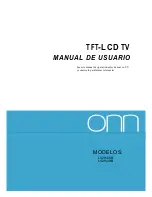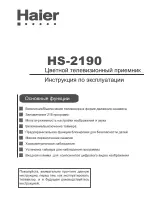
Television / User Manual
55 / 58 TR
GLOSSARY
--------------------------------------------------------------------------------------------------------------
The television may not have all of the specifica-
tions below. It may vary by the model of the
television.
Common Interface
It is an interface used in DVB receivers. Scram-
bled channels can only be viewed with a CA
module suitable for the encoding system and the
corresponding smart card.
CEC
This feature utilizes CEC (Consumer Electronics
Control) protocol.
CEC enables external devices that are con-
nected to the HDMI socket with the HDMI cable
to be controlled via the remote control.
DiSEqC
DiSEqC (Digital Satellite Equipment Control) is
a digital system that ensures that the motorized
multiple-LNB satellite systems are controlled.
DiSEqC is required when two or more satellite
locations need to be controlled.
DVB-C
DVB-C (Digital Video Broadcasting – Cable) is
a type of DVB used for the transmission of radio
and television signals through a cable connec-
tion.
DVB-S/S2
DVB-S/S2 (Digital Video Broadcasting – Satel-
lite) broadcasts the DVB signals through the
satellite.
DVB-T/T2
DVB-T/T2 (Digital Video Broadcasting – Terres-
trial) is a type of DVB used for the transmission
of radio and television signals through terrestrial
channels.
HD/Full HD/UHD
High Definition (HD) TV is a general name for
the television standard that has increased verti-
cal, horizontal and timewise definition.
Full HD is a feature of devices with HDTV that
can output or record 1920x1080 pixels of
definition.
HD is 3840 x 2160 for UHD.
JPEG
JPEG stands for Joint Picture Experts Group. It
is the process where the picture data are com-
pressed.
LNB
The Low Noise Block resides at the center of
parabolic antenna.
For example: It implements the satellite frequen-
cies that are between 10.7–11.75 or 11.8–
12.75 GHz in 950 to 2150 MHz and ensures
cable transmission with coaxial cables (and with
fiber-optic cables recently) and reception with
satellite receivers.
MP3
Compressed audio file format.
Noise Reduction
Reduces the "snow" areas by displaying the
picture a bit sharper and creating a slight blur.
Thus, it must be used as little as possible with
good picture material.
Symbol rate
It is the amount of the symbols transmitted in a
unit of time in the digital transmission technol-
ogy.
TransPonder
It is a cluster of various transmitters in a fre-
quency.
Vibrant Colour
Improves colour contrast and contrast setting.
This setting is highly powerful for use in normal
pictures and it should be used only when neces-
sary (low or off). Otherwise, slight details in the
image may be repressed.
WMA
These formats enable audio files that occupy a
very small place (even if they have a CD qual-
ity) to be recorded and played.
















































